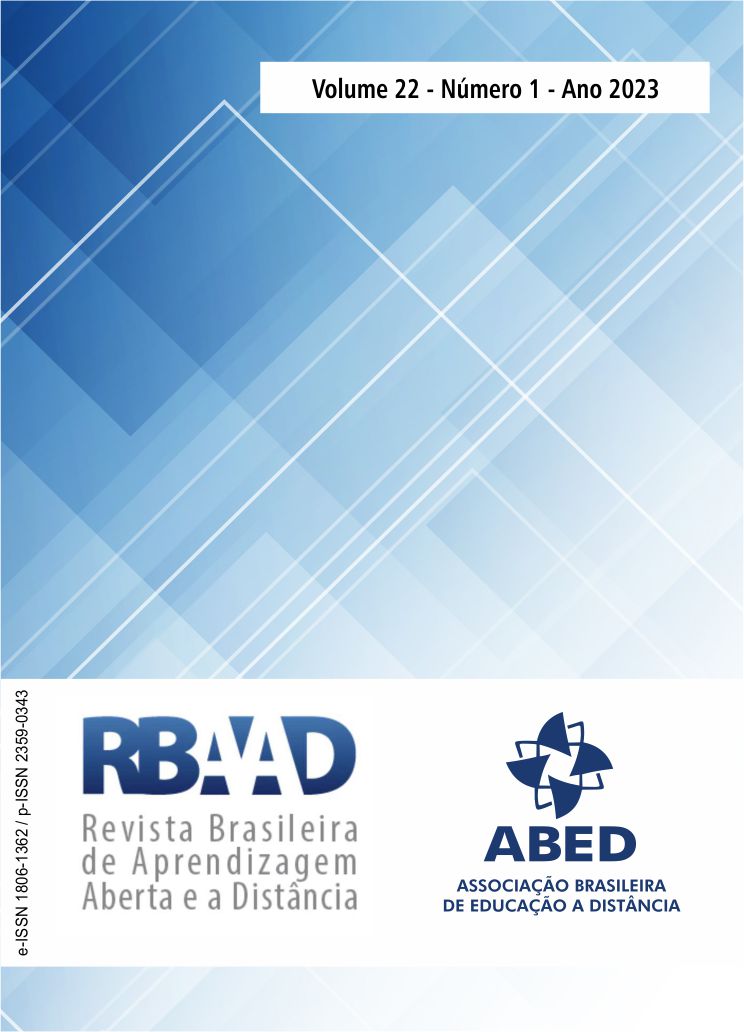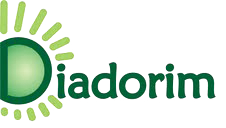EMOTIONS OF USERS IN FRONT OF EDUCATIONAL VIDEOS
A CASE STUDY FOCUSED ON THE CONSTRUCTION OF GUIDELINES FOR THE PRODUCTION OF MOOCS
DOI:
https://doi.org/10.17143/rbaad.v22i1.675Keywords:
emotions, educational videos, MOOCsAbstract
In recent decades, the growth of online education practices has been remarkable, aimed at promoting different types of knowledge and also professional training. In this scenario, massive and open online courses (known by the acronym MOOCs) gained greater visibility. In this modality, there is a centrality, in the pedagogical design, of the presence of educational videos. On the other hand, there are studies that characterize the role of emotions as fundamental, capable of accelerating or disturbing the learning process. Therefore, this study aims to analyze the perceptions and emotions of users when watching videos made available in a MOOC, aiming to define guidelines for those who intend to develop videos for MOOCs. The research took place in four stages, the first being a bibliographic review and definition of the method for inferring emotions. The method chosen was the analysis of facial expressions, through the use of the online tool EZ-MMLA ToolKit, which captures the image and defines the emotions, considering the basic emotions and the application of a questionnaire called AEQ (Achievement Emotions Questionnaire) that aims to assess the emotions of achievement experienced during educational tasks, adapted for research. Subsequently, the users' emotions were evaluated when watching the videos. The third step was data analysis and, finally, the definition of guidelines on creating videos for MOOCs. In general terms, it was possible to define that the best accepted video, among those presented, was the one that shows a tutorial and the least accepted was the one that presents synthetic voice narration. Other comments from the participants regarding the analyzed videos emphasize the need for an expressive number of examples with images, less information (short duration videos), removing background music, and, as a positive point, the presence of an avatar and posture who passes the information.
Downloads
References
BUSIN, Yuri. Análise de emoções em expressões faciais: veracidade das emoções e rastreio ocular. 72 f. Dissertação - Universidade Presbiteriana Mackenzie, São Paulo, 2013.
DA FONSECA, Vitor. Importância das emoções na aprendizagem: uma abordagem neuropsicopedagógica. Revista Psicopedagogia, v. 33, n. 102, p. 365–384, 2016.
DAMÁSIO, Antônio. O Mistério da Consciência: do corpo e das emoções do conhecimento de si. São Paulo: Companhia das Letras, 2000.
FONTANA, Marcus Vinicius Liessem; LEFFA, Vilson José. MOOCs para o ensino de línguas: um estudo em call desde uma perspectiva conectivista. Alfa: Revista de Linguística (São José do Rio Preto), São Paulo, v. 62, n. 1, p. 75–89, 2018.
GIL, Antônio Carlos. Métodos e técnicas de pesquisa social. 6. ed. São Paulo: Atlas, 2008.
HASSAN, Javaria; LEONG, Jovin; SCHNEIDER, Bertrand. Multimodal Data Collection Made Easy: The EZ-MMLA Toolkit. LAK21: 11th International Learning Analytics and Knowledge Conference. Association for Computing Machinery, Nova York, p. 579–585, 2021.
HILLAIRE, Garron; INIESTO, Francisco; RIENTIES, Bart. Humanising Text-to-Speech Through Emotional Expression in Online Courses. Journal of Interactive Media in Education, n. 1, p. 12, 2019.
LAASER, Wolfram; TOLOZA, Eduardo Adrian. The Changing Role of the Educational Video in Higher Distance Education. The International Review of Research in Open and Distributed Learning, v. 18, n. 2, 2017.
OLIVEIRA, João Batista Araújo e. Aprender e ensinar: a aprendizagem do ensino. 9aed. Belo Horizonte: Instituto Alfa e Beto, 2008.
PEKRUN, Reinhard et al. Measuring emotions in students’ learning and performance: The Achievement Emotions Questionnaire (AEQ). Contemporary Educational Psychology, v. 36, n. 1, p. 36–48, 2011.
PIAGET, Jean; INHELDER, Bärbel. A psicologia da criança. 16. ed. [S. l.]: Bertrand Brasil, 2003.
SANTOS, Edméa. Educação online para além da ead: um fenômeno da cibercultura. In: CONGRESSO INTERNACIONAL GALEGO-PORTUGUÊS DE PSICOPEDAGOGIA, 10, 2009, Braga. Anais [...] Braga: Universidade do Minho, 2009. p. 5658 - 5671.
SICILIANI, Igor Dornelles Schoeller. Elaboração, aplicação e avaliação de um Curso Online Aberto e Massivo (MOOC) interdisciplinar entre Física e Matemática. 127 f. Dissertação - Universidade Federal de Santa Catarina, Florianópolis , 2016.
SILVA, Julia Marques Carvalho da; ACCORSI, Maria Isabel; MUNHOZ, Estella Maria Bortoncello. O impacto do distanciamento social nos cursos abertos e massivos sob a perspectiva da procura e oferta. In: CONGRESSO BRASILEIRO DE ENSINO SUPERIOR A DISTÂNCIA - ESUD, 17, 2020, Goiânia Anais eletrônicos [...] Goiânia: Cegraf UFG, 2020.
TRIVIÑOS, Augusto Nibaldo Silva. Introdução à pesquisa em ciências sociais: a pesquisa qualitativa em educação. São Paulo: Atlas, 2011.
VENTURA, Magda Maria. O estudo de caso como modalidade de pesquisa. Revista SoCERJ, Rio de Janeiro, v. 20, n. 5, p. 383–386, 2007.
YADEGARIDEHKORDI, Elaheh et al. Affective computing in education: A systematic review and future research. Computers & Education, v. 142, p. 103649, 2019.
ZHENG, Saijing et al. Understanding student motivation, behaviors, and perceptions in MOOCs. In: ACM International Conference on Computer-Supported Cooperative Work and Social Computing. Proceedings [...] Association for Computing Machinery, 2015. p. 1882–1895.
Published
How to Cite
Issue
Section
License
Copyright (c) 2023 Revista Brasileira de Aprendizagem Aberta e a Distância

This work is licensed under a Creative Commons Attribution 4.0 International License.
All subsequent publications, complete or partial, shall be made with RBAAD's acknowledgment in the quotations as the original publisher of the article.
RBAAD offers Creative Commons license (CC BY 4.0) to all the published works.
















